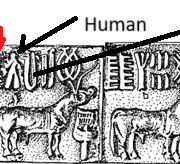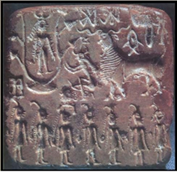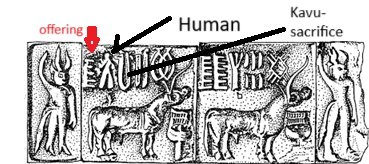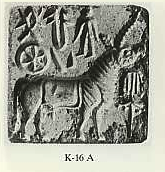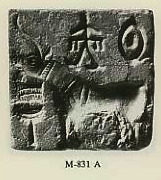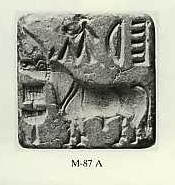Human sacrifices were rampant in Indus Valley civilization.
Rampant human sacrifices in the Indus Valley civilisation
Many historians and archaeologists paint a picture of a peaceful society in IVC. The seal’s inscriptions indicate that it was a bloodthirsty society where human sacrifices were common, and they made a point to record these events as well. The work of Asko Parpola supports my observation. (1)
Consider the various actions depicted in this seal. There are seven dancers, a goat, and a god within the pipal tree. The central piece of the action is the human head on the stool before the pipal tree god. Parpola says it is the head of the sacrificed human; I fully endorse his views. (1) Just like the Meso-American civilisations, where human sacrifice was rampant, the Indus civilisation also shows evidence of regular human sacrifice. Even in modern-age India, human sacrifices are still being reported in remote parts of India.
Consider the inscriptions on the above-given seal; it is written as a human sacrifice on the eve of Karkida-Kavu, specifically to appease the Pithrus (Pithru-Kavu). The fish symbol indicates Pithru. Read my article, “Sanskrit Influence on the Indus Script” (Article 3 in my book), for more information. (2) The man depicted in the seal is being sacrificed.
The above seal also depicts the sacrifice of a human being to appease the goddess of the bangle, Kali, and the sixth-day god, Shasti. Read my article, “The Sixth Day Belongs to God Shasti,” for more information. (chapter -39 of my book).
This seal also depicts human sacrifice; the symbol of a human being is followed by the kavu symbol (sacrifice) (read from right to left), indicating that the human being was sacrificed to appease the Pithru, represented by a fish symbol.
The seal above shows a bench-like symbol across the person’s stomach. It is not a bench symbol; it is the offering symbol, which typically resembles a comb symbol. Read my article, “Comb Symbol Indicates the Word Offering,” for more information. (Chapter 8 of my book). This shows that the man was sacrificed to appease the goddess Kali.
This vulva symbol indicates the goddess Kali.
The above-mentioned seal inscription depicts a man tied to a stake or with his leg bound by some restraining object. He may be a prisoner. The following symbol, ‘bow’, indicates the god Rudra, and the offering symbol suggests that human sacrifice was made to appease Rudra. This symbol of a man tied to a stake appears in many seals, suggesting that human sacrifice was a common practice in the Indus Valley civilisation.
There is a second possibility, the triangle symbol may indicate the mountain thereby meaning mountain god Enlil. This aspect needs verification.
References
1. Parpola, Asko (a). Deciphering the Indus script. New York: Cambridge University Press, 2000.
2. Jeyakumar(Book). Indus symbols dictionary. s.l. : Pothi Publication -Online, 2022.

